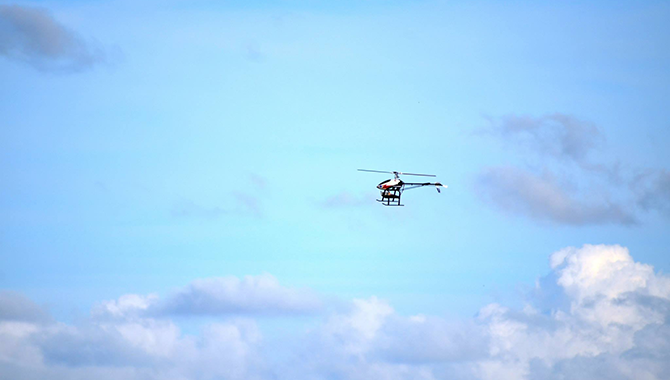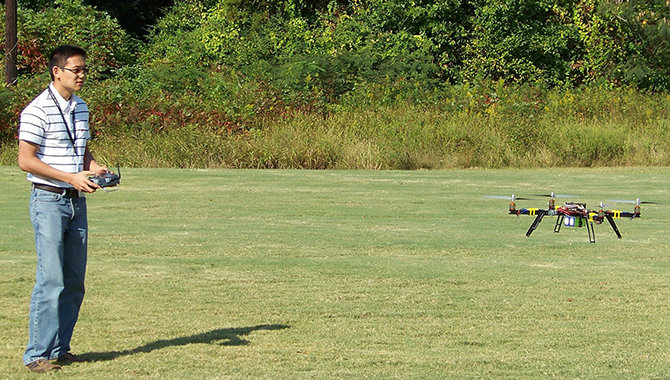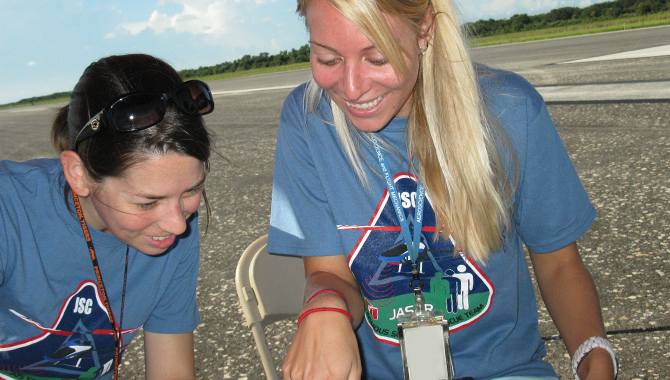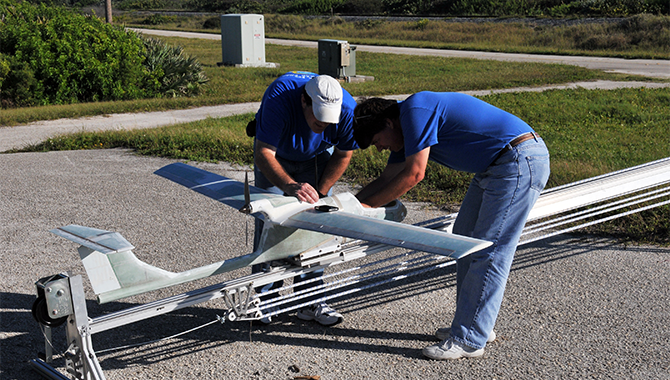
The Rocket U Unmanned Aerial Systems (UAS) Competition may have come to a close, but not to an end.
“Nobody sat silent,” said Roger Forsgren, director of the Academy of Program/Project & Engineering Leadership (APPEL), as he recalled the post-flight competition review and reflections of each of the Rocket U UAS Competition teams. “Everyone seemed anxious to tell their story.”
Their energy about the experience was particularly striking, Forsgren noted. “It’s that sort of passion that not only develops great engineers, but also creates productive team members,” he said. “This competition wasn’t a hobby or a backyard mechanic-type production—these teams had to follow NASA program and system engineering processes throughout their entire project.”
The Rocket U UAS Competition served as a platform for young NASA employees to grow and develop their engineering skills in ways that went beyond their daily work. It was an opportunity to engage with the full project lifecycle—soup to nuts.
As with most projects, the end result of the UAS competition was well-defined: successfully follow NASA’s project management and systems engineering principles to design and build a UAS capable of successfully executing distinct search and rescue objectives. However, as with most projects, the path to achieving the end result is usually not as clear.
Each team faced a variety of challenges including acquiring technical know-how, getting management support, navigating bureaucracy, understanding and following process, meeting safety standards, and dedicating time to the work on the project. Yet, through that process, each team member improved their engineering and leadership skills, laid the groundwork for utilizing new types of technologies at their centers, and connected with peers from across the agency.
There was far more to be gained from the competition than just taking first place.
“Rocket U created an opportunity to build something new, and it energized people,” said Dan Keenan, a systems engineer for the Kennedy Space Center team. “You could see it during each stage of the project. It was fun, interesting work, yet there was real risk of not meeting the competition deadline—that time crunch motivated us. It was not easy, but it was very worthwhile. We all learned a lot, especially about who knows what at KSC and across the agency. That knowledge alone increased our capabilities as a team, a center, and an agency. For that we are very grateful.”
With the inaugural competition over, Rocket University’s leadership is in the planning stages for a second event. Several of the UAS competition team members are continuing work on their projects and apply their new experience and skill sets in different ways. (Many members of each team have expressed their interested in a follow-up competition.)
“It’s great to read a technical book or engineering case study,” said Forsgren, ”but to participate through every phase of a project from conceptual design, to cutting metal, to launch, well, that’s the best way to learn.”
Read previous stories and interviews about the Rocket U UAS Competition:
- The Beginning
- Interview with Marshall Space Flight Center’s “Aero-M” Team
- Interview with Johnson Space Center’s “JASAR” Team
- Interview with the Kennedy Space Center Team
Learn more about Rocket University.
Click to view full photo gallery on Flickr.
The hand-built Kennedy Space Center fixed-wing aircraft, Genesis, flying over the test range the day before the competition.
Featured Photo Credit: NASA Marshall Space Flight Center / Adam Kimberlin









